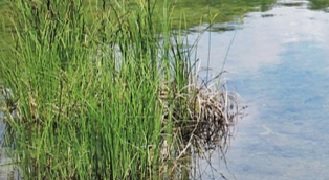Waterlogging happens when there is an excessive amount of water in a root zone of plants. This accessive quantity of water diminishes the oxygen accessible to plants’ roots.
Waterlogging can be a significant limitation to plant development and creation and, under specific conditions, will cause plant demise. This limitation may not be obvious until the entire soil profile is soaked and water shows up on a superficial level. The office gives landholders specialized data and backing on the board choices to perceive and lessen the effects of waterlogging.

Table of Contents
Causes of Waterlogging
- The topography, shape, slope, and drainage pattern of land can stop water flow which causes waterlogging.
- Constant rainfall saturates the soil which causes waterlogging.
- Particular types of soil such as black cotton soil hold moisture content in the soil for a long period of time which causes waterlogging.
- If the soil with a high water table is subjected to heavy rainfall.
- Seepage flow from nearby water bodies can cause waterlogging.
- Accessive irrigation can cause waterlogging.
How to prevent waterlogging
- Planting more trees prevent waterlogging. The roots of trees have a better capacity to absorb water.
- Construction of an underground water tank to collect an accessive amount of water.
- Good drainage facilities on the soil surface can prevent waterlogging.
- Making holes on the soil surface reduces the risk of waterlogging
Effects of waterlogging
1. Change of Soil PH
Soil subjected to waterlogging lost its alkaline and become more acidic. Plant growth is very difficult for acidic soil.
2. Bad Soil Aeration
In heavily saturated soil, the air is replaced by water which causes poor soil aeration. This type of soil is not suitable for plant growth.
3. Alter Soil Nutrients
Nitrogen is essential to the dirt and waterlogged soils experience the ill effects of nitrogen inadequacy. The atmosphere made by waterlogging influences the nitrogen supplements as well as different minerals, for example, sulphur, zinc, iron, manganese, phosphorous, and potassium.
Planting more trees prevent waterlogging. The roots of trees have a better capacity to absorb water.
Construction of an underground water tank to collect an accessive amount of water.
Good drainage facilities on the soil surface can prevent waterlogging.
Making holes on the soil surface reduces the risk of waterlogging
